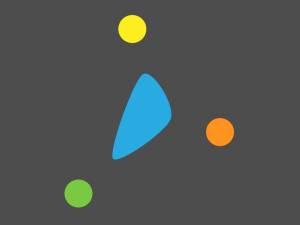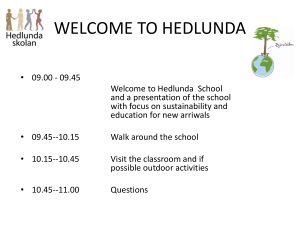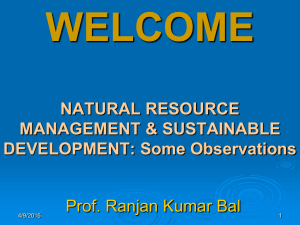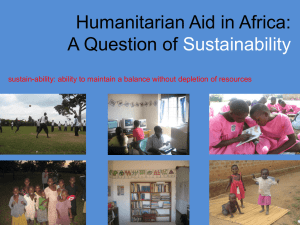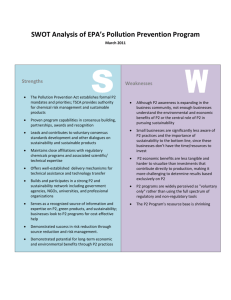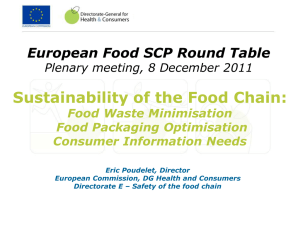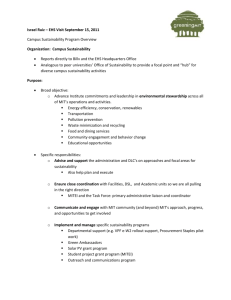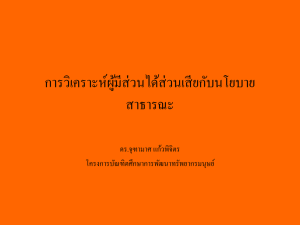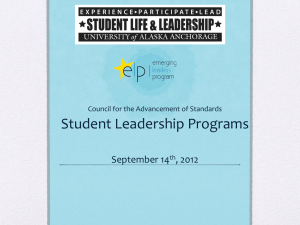Commercial Integrated Circuit Technology in Defense Systems
advertisement
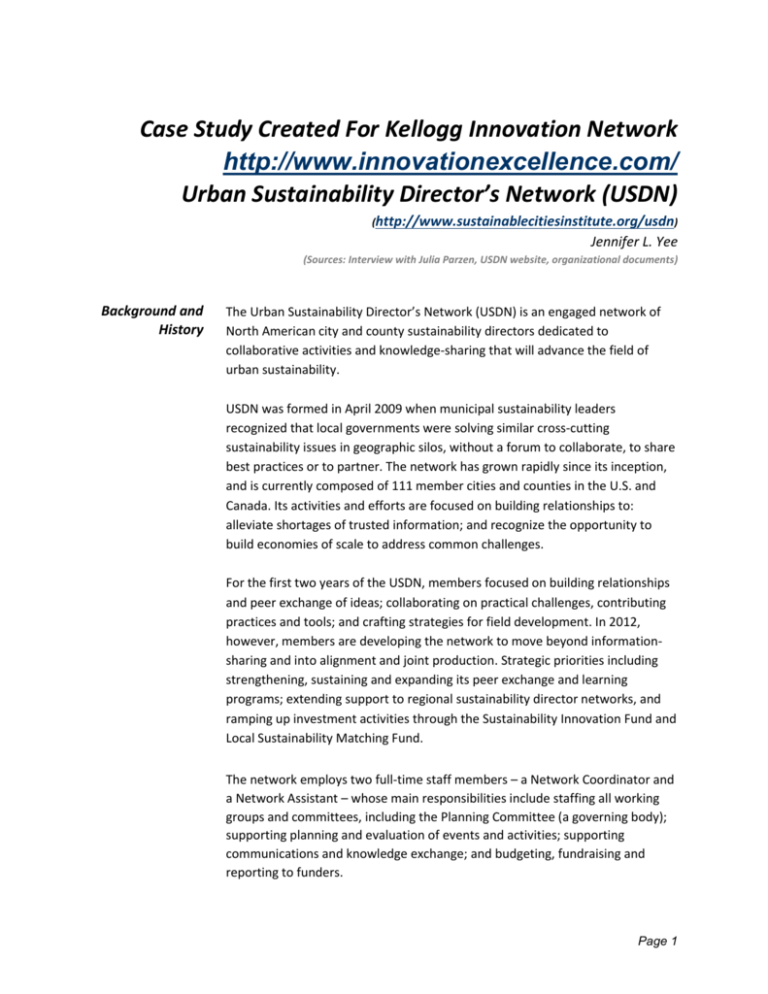
Case Study Created For Kellogg Innovation Network http://www.innovationexcellence.com/ Urban Sustainability Director’s Network (USDN) (http://www.sustainablecitiesinstitute.org/usdn) Jennifer L. Yee (Sources: Interview with Julia Parzen, USDN website, organizational documents) Background and History The Urban Sustainability Director’s Network (USDN) is an engaged network of North American city and county sustainability directors dedicated to collaborative activities and knowledge-sharing that will advance the field of urban sustainability. USDN was formed in April 2009 when municipal sustainability leaders recognized that local governments were solving similar cross-cutting sustainability issues in geographic silos, without a forum to collaborate, to share best practices or to partner. The network has grown rapidly since its inception, and is currently composed of 111 member cities and counties in the U.S. and Canada. Its activities and efforts are focused on building relationships to: alleviate shortages of trusted information; and recognize the opportunity to build economies of scale to address common challenges. For the first two years of the USDN, members focused on building relationships and peer exchange of ideas; collaborating on practical challenges, contributing practices and tools; and crafting strategies for field development. In 2012, however, members are developing the network to move beyond informationsharing and into alignment and joint production. Strategic priorities including strengthening, sustaining and expanding its peer exchange and learning programs; extending support to regional sustainability director networks, and ramping up investment activities through the Sustainability Innovation Fund and Local Sustainability Matching Fund. The network employs two full-time staff members – a Network Coordinator and a Network Assistant – whose main responsibilities include staffing all working groups and committees, including the Planning Committee (a governing body); supporting planning and evaluation of events and activities; supporting communications and knowledge exchange; and budgeting, fundraising and reporting to funders. Page 1 Urban Sustainability Director’s Network Yee Organizational and sponsorship structure True to its namesake, USDN is designed as a network to support the activities and collaboration of sustainability directors in North America. This includes heads of traditional city environmental agencies, sustainability departments, or Mayor’s Office or City Council special initiatives. Additional criteria for these sustainability leaders are evaluated through an application process and include: Responsibility for cross-departmental and communitywide collaborations to achieve sustainability goals Proven sustainability policies or practices that they are willing to share with their peer USDN members Commitment to actively learn from, assist, and collaborate with their peers and regularly contribute time and effort to the Network: o Open weekly e-news at least 2/3 of the time o Respond to two of three annual surveys o Actively participate in a USDN committee, working group, user group, or regional network (goal: be connected to at least five other members through an activity) o When a new website is launched, update their profile once per year and contribute at least once per quarter to content/answers Who honor USDN’s policy of creating a safe space for exchange Once sustainability leaders meet these criteria, they may fall into one of two types of USDN active members: core and associate. Core members must be city staff members who are heads of broad sustainability initiatives. These members pay dues based upon their city size and are the only members who attend an annual meeting and lead joint innovation projects. The core membership is about 75 cities and an effort is made to contain growth to about 5 to 10 more Core members per year. Associate members, by contrast, may be either city or county staff members and have a non-sliding membership fee of $100 per year. Associate members may participate in all USDN activities, but they cannot: attend the annual meeting; lead a USDN Sustainability Innovation Fund grant proposal; join an oversubscribed USDN committee/group. The USDN further extends its community by allowing members to invite multiple city staff to receive e-news and privileged access to the website, as well as take part in small group discussions, working groups, and user groups. However, USDN takes member participation seriously, and these member guest may not substitute for the leadership and active involvement of the member. Sponsorship and revenues Page 2 USDN is funded by the Summit Foundation, the Kendeda Fund, the Rockefeller Brothers Fund, the Surdna Foundation, the Barr Foundation, and the Home 2 Urban Sustainability Director’s Network Yee Depot Foundation. Additionally, it receives income from core membership dues and voluntary contributions. Beginning in calendar year 2012, USDN is charging sliding scale dues with a scholarship program for members who are contributing time and effort to creating network value. Dues in 2012 are structured to cover 25% of core network operating costs and grow over 3 years to 50% of core network costs. USDN offers a "menu" of payment possibilities, so each member can tailor it to their situation. Below 100,000 population = $500 100,001 - 500,000 population = $1,000 500,001 - 1 million population = $1,625 Above 1 million population = $2,500 Because dues are likely to be paid by the city, if a member leaves before the end of the calendar year, the city can assign another staff member who leads a broad sustainability initiative to participate through the end of the year and attend the annual meeting. Governance Together with the Network Coordinator, USDN’s Planning Committee is responsible for the network’s strategic plan for the coming year. Initially composed of the founders of USDN, the Planning Committee is now composed of ten members. Each year, two of these members cycle off and two other members cycle on, allowing for dynamic leadership changes. The current Planning Committee decides which members will cycle on based upon interest, past participation in the Network, vision for the future of the network, and contribution to diversity (size of city, region, etc.). More specifically Planning Committee members must fulfill the following duties: Oversee achievement of the purpose of the USDN; Help establish goals, objectives, action plans, and budgets; Assist fundraising for the Network; Be an ambassador for the Network; Lead one or participate in several USDN activities (ex. small group discussions, emerging projects); Be on 3/4 of monthly Planning Committee conference calls; Respond to requests for advice from the Network coordinator; Help to recruit members; Stay in touch with 8 members semi-annually about their own activities, interests and needs; Participate on monthly network-wide calls; Read weekly e-newsletter; and, Page 3 Urban Sustainability Director’s Network Yee In total, dedicate at least 5 or more hours/month. At each annual meeting, members decide whether to continue this approach to governance. While the Planning Committee decides the overall strategic direction of USDN, it is important to note that most Network activity is directed by working groups of members. The Planning Committee and the Network Coordinator also oversee a number of working group activities as well as strategic partners and consultants. The following organizational chart details this structure: Leadership Julia Parzen, Network Coordinator Planning committee (structure as described above) Innovation Networking Activities Page 4 USDN peer to peer networking activities are the first step toward identifying opportunities for joint gain and innovation investment (see below “Innovation [Collaboration] System). 4 Urban Sustainability Director’s Network Yee In additional to a 2.5 day annual meeting at which core members set USDN focus areas for the following year, the network staff also facilitates ongoing communication between its members through virtual peer-to-peer learning and knowledge-sharing opportunities, including: peer-to-peer user groups, small group discussion marketplace, help desk/online networking and the creation and co-creation of tools/products through working groups. USDN tries to connect to many more cities by helping members to create regional networks. Peer to Peer User Groups Peer to peer user groups are self-formed groups of USDN members that share operational questions and challenges for a particular field (e.g. instituting a citywide bike-sharing program). Importantly, these groups are composed of peer-only members who may openly share problems and challenges. However, with the consensus of other group members, these groups of 15-40 members are permitted to bring external subject matter experts to speak to the group or manage initiatives. Groups are often virtual, and are facilitated by the network coordinator or hired consultants via conference call. 80% of USDN members participate in one or more ongoing user groups. All groups have member co-chairs. These include: Sustainable Behavior Pilot Projects Group (28 Members): To test CBSM as a means to change resident and employee behavior. Sustainable Behavior User Group (23 members): To learn from each other how to succeed at behavior change initiatives. Bike Sharing User Group (29 members): To learn from each other how to build and sustain successful bike sharing programs. Pay as You Throw User Group (11 members): To learn from each other how to build support for and structure PAYT programs. Sustainable Economic Development User Group (27 members): To learn from each other how to spur and promote sustainable economic development. Climate Change Adaptation User Group (40 members): To learn from each other how to build resilience, including policy, funding, and measurement. Rental Housing EE User Group (32 members): To learn from each other how to improve energy efficiency of local rental housing through comprehensive approaches. Policy (57 members): To work together to track federal policy, partner with federal agencies, and communicate the value of pursuing sustainability. Sustainability Indicators (22 members):To learn how to choose effective sustainability indicators and use them to drive improvement. Other Groups Under Development: District Energy (22) Page 5 Urban Sustainability Director’s Network Yee Small Group Discussion Marketplace Small group discussions are conversations brokered by USDN staff that take place between 7 to 10 USDN members. Agendas include presentations (no more than 15 minutes), and time for discussion between the members. Requests for these small group discussions are advertised in the USDN Weekly E-News, and example topics include: urban climate adaptation strategies, ecodistricts, and responding to external sustainability rating organizations. Help Desk/Online Networking Until early 2012, USDN used a website hosted by the Sustainable Cities Institute to coordinate an on-line Help Desk –a members-only, online forum for discussion on sustainability topics. USDN members can post questions on the Sustainable Cities Institute website and participate in an online dialogue with other members. Questions are publicized in the Weekly E-News, and examples of topics include information on recycling contamination rates, training programs and safety requirements for city employee bike programs, and ways to accelerate permitting of EV charging stations In 2012, USDN will launch a private social networking website for its members, that is focused primarily on relationship-building and sharing. Created with features proposed by USDN members, the site will be organized around a series of tags that index documents, links, discussion topics, and most importantly, individuals who are related to that topic. The goal of the site, “is not to create a best practices library, but to connect people in real time who can help each other solve problems. It is focused on reaching the right person, not the right document.” The private site, currently in beta, will launch in February 2012. Working groups/co-creation of products USDN also coordinates working groups of 10 or more interested members to address issues around field-building. These groups differ from peer-to-peer groups because their focus is collective creation of field-buiding tools and products, rather than issue-focused. Working group focus areas include: Professional Development; Innovation; Regional Networks; and Public Policy.. Working groups also evolve organically out of member interest. For example, the Professional Development Working Group came about when 30 new sustainability directors joined the ranks of the USDN, and shared an appetite for professional development activiites. USDN subsequently raised some grant money and put together a working group to address this need. The group conducted an analysis of core competencies across sustainability directors; developed a toolkit for self-assessment; and then partnered with a third party that provided skill development for gap areas assessed. To date, up to 100 cities have gone through this training program. Other examples of working group output include: Page 6 6 Urban Sustainability Director’s Network Yee Other activities Professional development: Sustainability Director Professional Development Toolkit; Prototype for self-assessment tool to identify which skills/knowledge sustainability professionals want to further develop; Urban Sustainability Leadership Academy Best practices/management: Prototype for innovation best practices and field scans; Project case examples; Prototype “job description” of a sustainability director Directory services: Supplier Directory for Sustainability professional development services/products; Regional networks guidebook Financing resources: Collaboration with the Funders’ Network for Smart Growth and Livable Communities to create the Local Sustainability Matching Fund Other tools: Boston triple bottom line calculator; Social Networking Guidebook In addition to these peer-to-peer exchange and learning activities, USDN coordinates regional network building, and opportunity identification and development processes for promising innovation investments. Alignment with regional networks: USDN is helping to build and align with structured multistate networks of sustainability directors as a way to grow networking opportunities and collaborative action. USDN has supported the creation of regional networks in New England, Western States, Southern States, Heartland, Midwest, and Northwest. The group that coordinates regional network development, capacity building, and exchange is the Regional Networks Coordinating Committee. USDN raised funds with partner Innovation Network for Communities to offer to partner regional networks seed funding, as well as training, consulting, and toolkits. Innovation (Collaboration) System: USDN’s Innovation System is the Network’s strategy for collaborating across member jurisdictions on the identification, development and distribution of key urban sustainability innovations for investment. The detailed process includes a scan of best practices and other initiatives, financial support for development of innovations, and piloting approaches to scale and replicate these innovations. Investments are determined by RFP for priority areas that the members choose each year at the annual meeting. For 2012 these focus areas are large scale behavior change; sustainability indicators; urban agriculture; funding sustainability initiatives; alternative financing for building energy efficiency; zero waste; and sustainability marketing campaigns. The effort is led by the USDN Sustainability Innovation Fund Steering Committee made up if 10 members and its strategic partner, the Innovation Network for Communities (INC). The RFP launched in Page 7 Urban Sustainability Director’s Network Yee December 2011 attracted 16 collaborative innovation proposals totaling about $700,000 from 45 member cities. Metrics and Impacts USDN manages and measures value-add of its activities by keeping constant track of its members’ contributions to the network as well as their satisfaction with the user groups and activities. For example, the network keeps a scorecard for member participation and their contribution to network value creation. It also measures the depth and breadth of the member network on a “connectivity map,” to understand the broader reach of diverse network members. Members are committed to three in-depth surveys annually so that the network may measure its effectiveness and impact. The third survey is an annual checkin to make new contacts and relationships with incoming sustainability directors; to monitor ideas and practices adopted because of USDN participation as well as progress made in addressing key challenges; and finally it measures satisfaction and perceived effectiveness of the USDN activities. Lessons Learned Page 8 - None of the innovation that USDN has supported or surfaced would be possible without peer-to-peer networking. All innovations – defined by USDN as not only products, but also policies, practices, and any new systems or tools that advances a city’s goal around sustainability – have been collaborative in nature and have sprung from self-formed peer groups that have built trust sharing challenges around an issue. - In-person networking is valued, but not necessary for trust-building. USDN’s members have limited resources and time to meet in-person to collaborate, and much of the network’s activities are conducted virtually. The single annual meeting is an essential and intense opportunity to build relationships. However, with excellent facilitation by the network coordinator, relationships of trust and mutual sharing can still be built. - USDN has a dynamic programming model that is based on member’s unmet needs and focus areas. Each year the organization compiles a “zero-based budget” and allows the annual meeting and Planning Committee to determine strategic directions for the organization based on current member challenges. Additionally, leaders from old groups are encouraged to start and join new groups (e.g. one member who was 8 Urban Sustainability Director’s Network Yee instrumental in the Professional Development Group is now co-chair of a regional networking group) based on their changing needs and interests. USDN believes only in putting energy into projects that have member momentum and interest. - USDN does not consider ending a group to be a failure. The network has created a self-regulating system where only groups that continue to produce value and appeal to its members will continue. - On-going data collection and analysis by a network development expert allows the USDN Planning Committee and staff to assess the health and evolution of the network and plan accordingly. - While the network is closed, USDN’s Planning Committee and staff actively seeks outside opportunities to advance the network members’ agendas. A colleague of the USDN network coordinator requested some help from USDN members in a benchmarking study on sustainability performance management being done by the McKinsey and Co. consulting group in the Boston area. Tracking sustainability performance is of high interest to USDN members, so USDN staff identified a group of USDN members who agreed to help if they could shape the survey and get the results. - USDN believes there is an optimal core network size and is scaling growth accordingly. USDN hypothesizes that a network of 75 cities (or about 100 individuals at an annual meeting) is the maximum to facilitate a peer-to-peer sharing environment. For this reason, in part, the network has instituted member dues to create a barrier for those who may not be serious about contributing to the network. Additionally, USDN is attempting to understand how they might scale their efforts to more of the community online or through exchange with regional networks across North America, in order to preserve the ~75 core member number. Page 9
